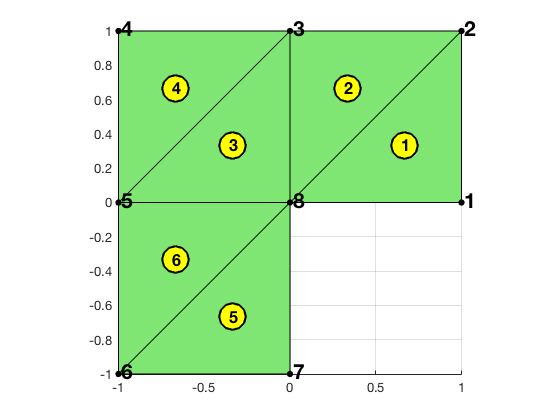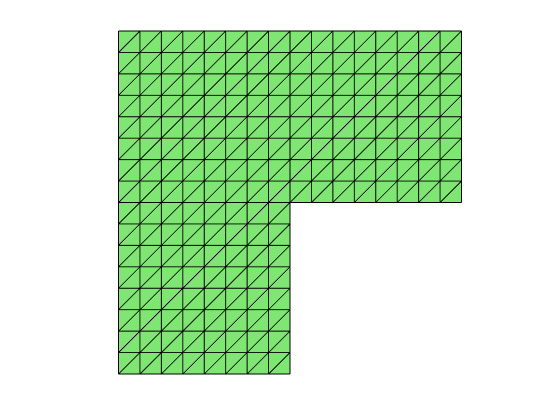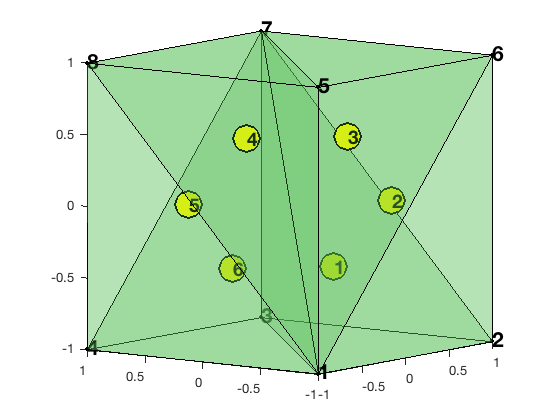Basic Data Structure Representing Meshes
Data structure: node and elem
Two matrices node(1:N,1:d) and elem(1:NT,1:d+1) are used to represent a $d$-dimensional triangulation embedded in $\mathbb R^d$, where N is the number of vertices and NT is the number of elements.
In 2-Dnode(k,1) and node(k,2) are the $x$- and $y$-coordinates of the $k$-th node for points. In 3-D, node(k,3) gives the additional $z$-coordinates of the $k$-th node.
In 2-Delem(t,1:3) are indices of 3 vertices of triangle t. In 3-D elem(t,1:4) are indices of 4 vertices of tetrahedron t. By convention, the vertices are ordered such that the signed area/volume is positive. Therefore in 2-D, three vertices of a triangle is ordered counterclockwise and in 3-D, the ordering of four vertices of a tetrahedron follows the right-hand rule.
If the vertices are not positive ordering, call elem = fixorder(node,elem) to set all triangles counterclockwise or elem = fixorder3(node,elem) to fix the orientation of tetrahedra.
For the following cases, a different ordering is used for other consideration.
- Edge and face elements; see Simplicial Complex in Three Dimensions
- Uniform refinement in 3-D
Example: An L-shape domain in 2-D
node = [1,0; 1,1; 0,1; -1,1; -1,0; -1,-1; 0,-1; 0,0]; % coordinates
elem = [1,2,8; 3,8,2; 8,3,5; 4,5,3; 7,8,6; 5,6,8]; % connectivity
showmesh(node,elem);
axis on;
findelem(node,elem); % plot indices of all triangles
findnode(node); % plot indices of all vertices

Apply the uniform refinement sevreal times to obtain a fine mesh.
for i = 1:3
[node,elem] = uniformrefine(node,elem);
end
showmesh(node,elem);

Example: A Cube in 3-D
node = [-1,-1,-1; 1,-1,-1; 1,1,-1; -1,1,-1; -1,-1,1; 1,-1,1; 1,1,1; -1,1,1];
elem = [1,2,3,7; 1,6,2,7; 1,5,6,7; 1,8,5,7; 1,4,8,7; 1,3,4,7];
clf; showmesh3(node,elem,[],'FaceAlpha',0.25);
view([-53,8]);
axis on
findelem3(node,elem);
findnode3(node);

Unlike the 2-D case, to apply uniform refinement to obtain a fine mesh with good mesh quality, a different ordering of the initial mesh, which may violate the positive ordering, should be used. See 3-D Red Refinement.
Comments